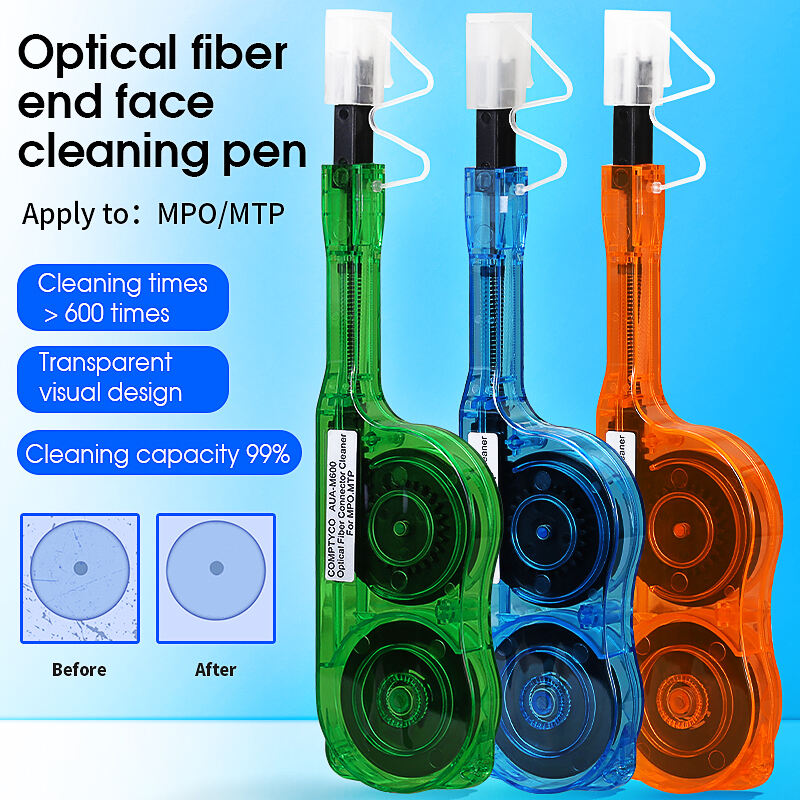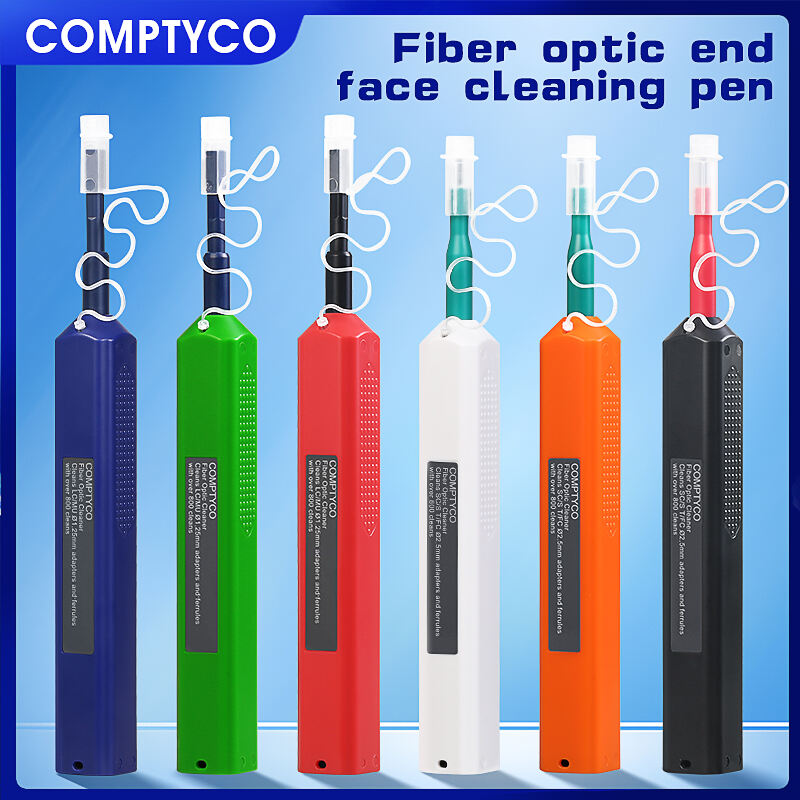Making the Right Choice for Optical Fiber Maintenance
The world of fiber optic networks demands pristine connections for optimal performance. Whether you're managing a large-scale telecommunications infrastructure or maintaining a local network, the decision between DIY solutions and professional fiber optic cleaner products can significantly impact your network's reliability. This comprehensive guide explores both options to help you make an informed decision that aligns with your specific needs and circumstances.
Clean fiber optic connections are paramount for maintaining signal integrity and preventing data loss. As networks become increasingly complex and demand higher bandwidths, the importance of proper cleaning techniques and tools cannot be overstated. Let's delve into the various aspects that will influence your choice between DIY and professional cleaning solutions.
Understanding Professional Fiber Optic Cleaning Solutions
Advanced Features of Professional Cleaners
Professional fiber optic cleaner products are specifically engineered to meet industry standards and provide consistent results. These solutions typically include specialized solvents that effectively remove various contaminants, including oils, dust, and debris. The professional-grade cleaners are designed to evaporate quickly without leaving residue, ensuring optimal signal transmission.
Many professional cleaning solutions come with anti-static properties that prevent dust from being attracted to freshly cleaned surfaces. They also incorporate precise dispensing mechanisms that prevent over-application, which could potentially damage sensitive fiber optic components.
Quality Assurance and Certification
Professional cleaning products undergo rigorous testing and certification processes. They are typically approved by major fiber optic equipment manufacturers and comply with international telecommunications standards. This certification ensures compatibility with various fiber optic components and guarantees that the cleaning process won't damage expensive equipment.
The consistency of professional solutions provides peace of mind for network administrators who need to maintain documentation and comply with industry regulations. These products often come with detailed specifications and safety data sheets, making them ideal for enterprise-level implementations.

Exploring DIY Cleaning Alternatives
Common DIY Cleaning Methods
DIY cleaning approaches often involve using common household products or general-purpose electronic cleaners. While these methods might seem cost-effective initially, they require careful consideration and understanding of the risks involved. Some technicians experiment with isopropyl alcohol or specialized wipes, but these alternatives may not provide the same level of cleanliness as professional solutions.
The appeal of DIY methods often lies in their immediate availability and perceived cost savings. However, it's crucial to understand that improvised cleaning solutions may not address the specific requirements of fiber optic components and could potentially cause long-term damage.
Risks and Limitations
Using non-specialized cleaning products carries several risks. Household cleaners may leave residues that attract dust or create static electricity, leading to signal degradation. Some DIY solutions might be too aggressive, potentially damaging the delicate fiber optic surfaces or coating materials.
The inconsistency of DIY methods can also make it difficult to maintain quality standards across multiple cleaning sessions. This variability could result in inconsistent network performance and make troubleshooting more challenging when issues arise.
Cost Analysis and Long-term Considerations
Initial Investment Comparison
While professional fiber optic cleaner products may require a higher upfront investment, they often prove more economical in the long run. The precision and efficiency of professional cleaners mean less product waste and fewer cleaning attempts required to achieve optimal results. Additionally, professional solutions typically come with proper storage containers and applicators, ensuring the product maintains its effectiveness throughout its shelf life.
DIY solutions might seem cheaper initially, but the cost of potential equipment damage, network downtime, and repeated cleaning attempts can quickly exceed the price of professional products. When calculating costs, it's essential to consider these hidden expenses and potential risks.
Maintenance Efficiency and Time Management
Professional cleaning solutions are designed for efficient application and quick results. Their specialized formulations work faster and more effectively than DIY alternatives, reducing the time required for maintenance tasks. This efficiency becomes particularly valuable in large-scale networks where numerous connections require regular cleaning.
The time saved using professional products can significantly impact operational costs, especially when considering the hourly rates of technical staff. Professional cleaners also tend to require fewer repeat cleanings, further improving maintenance efficiency.
Best Practices for Fiber Optic Cleaning
Professional Cleaning Protocols
Implementing proper cleaning protocols is essential regardless of the chosen cleaning method. Professional fiber optic cleaner products typically come with detailed instructions and best practices developed through extensive research and field testing. These protocols often include specific techniques for different connector types and environmental conditions.
Following manufacturer-recommended procedures ensures consistent results and helps maintain warranty coverage for expensive network components. Professional protocols also typically include documentation guidelines, which are crucial for quality assurance and troubleshooting.
Training and Skill Development
Professional cleaning solutions often come with training resources and support materials. This educational component helps technicians develop proper cleaning techniques and understand the importance of maintaining clean fiber optic connections. Many manufacturers offer certification programs or training sessions to ensure their products are used correctly.
The structured approach to training with professional products helps organizations maintain consistent standards across their technical teams. This standardization is particularly valuable when multiple technicians are responsible for network maintenance.
Frequently Asked Questions
How often should fiber optic connections be cleaned?
Fiber optic connections should be cleaned every time they are disconnected and reconnected, regardless of whether they appear dirty. Regular cleaning is also recommended during routine maintenance checks, typically every 3-6 months, depending on the environmental conditions and network usage patterns.
Can I use alcohol wipes to clean fiber optic connections?
While isopropyl alcohol wipes might seem like a suitable alternative, they are not recommended for fiber optic cleaning. Professional fiber optic cleaner products are specifically formulated to evaporate quickly and leave no residue, unlike alcohol wipes which may leave behind particles or create static charges.
What makes professional fiber optic cleaners worth the investment?
Professional cleaners offer several advantages, including specialized formulations that protect fiber optic surfaces, consistent cleaning results, compliance with industry standards, and proper documentation support. They also help prevent costly equipment damage and reduce the risk of network downtime, making them a cost-effective choice in the long run.







